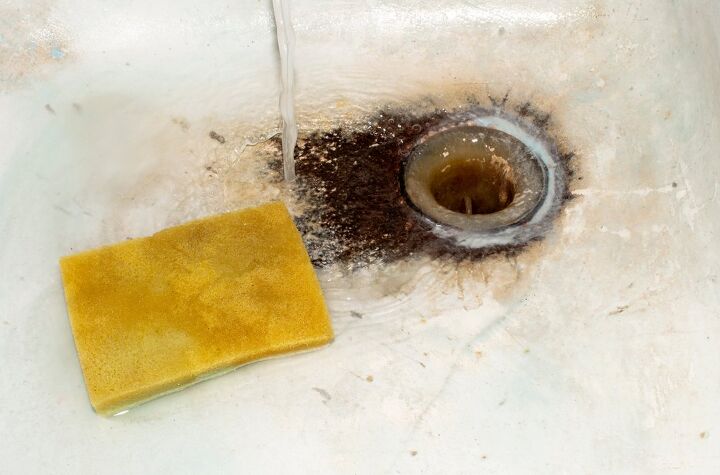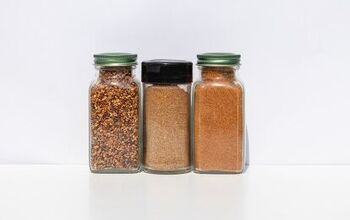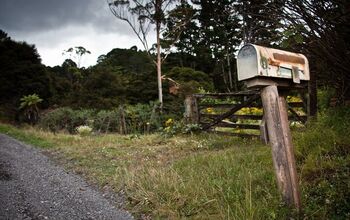What To Do With Old Cast Iron Sink? (Find Out Now!)

The cast iron sink has been a part of households since the end of the 19th century. In the late 19th century and early 20th century, the cast iron was replaced with silver and copper. You can still find cast iron sinks in older homes, and many people wonder what to do with old cast iron sinks.
Sell your old cast iron sink online, or at a thrift store or antique shop. Take it to a salvage yard. Recycle it. Restore your old cast iron sink. Use it for a garden fountain, flower planter, outdoor beverage chiller for a BBQ, or laundry sink for washing small, delicate items.
Let’s take a closer look at cast iron and your options for what to do with an old cast iron sink.
Do You Need to Hire Sink Installers?
Get free, zero-commitment quotes from pro contractors near you.

What is Cast Iron?
Cast iron is an alloy that is made with a 2% or greater carbon content. The molten metal is poured into a mold to make a variety of items, including sinks. The process eliminates the need to shape the metal with hammers and other tools. Other types of iron and metals do not have the proper chemical properties for casting.
Types of Cast Iron
Cast iron describes a general property of an iron-based metal to be used effectively in molds. There are 4 distinct types of cast iron.
- White Cast Iron: A hard cast iron that is highly resistant to scratches and abrasions
- Malleable Cast Iron: Made with white cast iron, malleable cast iron can be bent and shaped
- Gray Cast Iron: The most common type of cast iron
- Ductile Cast Iron: Invented in the early 1940s as a softer type of cast iron
Why is Cast Iron Used for Sinks?
When indoor plumbing was first brought into households, kitchen sinks needed to be durable and easy to maintain. Cast iron offered the ideal properties for kitchen sinks. An enamel layer over the cast iron helped with cleaning and hygiene, and also stood up to daily use.
Is a Cast Iron Sink Safe?
When the enamel surface is intact, cast-iron sinks are very safe to use. The enamel is stain-resistant and nonporous, so bacteria does not get into the material.
Chipped enamel on a cast iron sink exposes the raw metal. Bacteria hides in the rough surface of the cast iron. You’ll need to spend some extra time cleaning the sink. Cast iron is also prone to rust. If the majority of the sink is covered with enamel and free from rust, it is safe to use. Otherwise, you should restore the sink.
Are Cast Iron Sinks Valuable?
A modern cast iron sink costs $350 to $700. You can find cast iron sinks as affordable as $100 and as expensive as $2,700. Old cast iron sinks are valuable. People love the vintage style and design.
How to Restore an Old Cast Iron Sink
Cast iron sinks are relatively easy to restore, as long as the metal has not deteriorated from rust. Cleaning, repairing, and refinishing will have your old cast iron sink looking as good as new, or better.
How to Clean an Old Cast Iron Sink
When you are cleaning an old cast iron sink, the goal is to remove the rust, grime, and bacteria from the metal. First, use a fine-grain sandpaper to sand the rusted areas. Go over each area about 3 to 4 times. Wipe away any loose grit as you work with a microfiber cloth or soft brush.
After you sand the rusted areas, apply a vinegar solution. Fill about 1/2 of a spray bottle with white vinegar, and add water to fill the bottle. Spray the vinegar solution onto the exposed metal of the cast iron sink. Let it sit for about 30 to 60 minutes. The vinegar dissolves any rust that you didn’t reach with the sandpaper. Use a nylon scrub pad to clean the exposed metal, and rinse with warm water.
Disinfect the cast iron sink with a mixture of 1 part bleach and 10 parts water. Put on a pair of rubber gloves, and apply the bleach solution to the exposed metal. Rinse with warm water, and dry the sink with a clean cloth.
Cast Iron Sink Repair
After you clean and disinfect your old cast iron sink, use an epoxy enamel to fill in the areas with exposed metal. It is not the same type of enamel as the original surface, but it works well to protect the cast iron.
Cast Iron Sink Refinishing
Refinishing an old cast iron sink restores the surface for durability and easy cleaning. Porcelain enamel is the preferred technique, but this has to be done professionally, and few companies offer this service. You’ll need to contact the company. There may be a waiting list, and you’ll need to ship the sink to the company. Shipping can cost $275 or more because of the weight of an old cast iron sink.
The sink is sandblasted and a new layer of porcelain enamel is applied. Expect the fresh coat of porcelain enamel to be thinner than the original enamel finish.
If you want to do the work yourself, use an epoxy enamel paint on the sink, although it won’t stand up to daily use as well as porcelain enamel. Remove the old enamel finish with sandpaper, or have the sink sandblasted.
Can a Cast Iron Sink Be Recycled?
With so much focus on recycling as many materials as possible, many people wonder if cast iron can be recycled. Yes, you can recycle an old cast iron sink. Steel is made mostly from iron, so your old cast iron sink can be melted down and made into just about any type steel product. Check with your local recycling center to find out more.
Take It to a Thrift Shop or Salvage Yard
Cast iron continues to be a desirable material for bathroom and kitchen sinks, and people are always looking for a bargain. Take your old cast iron sink to a local thrift shop or salvage yard. You can even try to sell it online, although the cost of shipping may deter some buyers.
How to Repurpose an Old Cast Iron Sink
Cast iron sinks are easy to repurpose. The durable, vintage design is especially good for outdoor use.
Garden Fountain
The drain in your old cast iron sink is perfect for the electrical wire of a garden fountain. Use an AC plug or go solar. Buy a fountain kit online or at a local hobby store.
Flower Planter
Lay about 1” to 2” of gravel in the bottom of the cast iron sink, and fill it with flowers and plants. Put it outside on a table or just about anywhere in your garden.
Beverage Chiller
Cast iron is good for keeping drinks cold during your next BBQ or pool party. Fill it with ice, and use it for sodas, bottled water, and cold food items.
Laundry Sink
Having a sink in your laundry room gives you a place to handwash delicate items and rinse off some extra mud and dirt. Your laundry room already has access to water lines. All you need to add is a countertop and cabinet. You can also build a stand for the sink.
Do You Need to Hire Sink Installers?
Get free, zero-commitment quotes from pro contractors near you.

Related Questions
What is an undermount sink?
An undermount sink attaches to the underside of your countertop. Brackets are used to hold the sink in place.
Is cast iron better than stainless steel for a kitchen sink?
Cast iron is a better option for durability, but the enamel on the sinks does chip. The material also stands up to stains much better. If you drop a dish in a stainless-steel sink, it is less likely to break than if it was dropped in a cast iron sink.
Conclusion
Old cast iron sinks don’t need to be thrown in the trash. They can be donated, recycled, upcycled, and sold. An old cast iron sink can be repaired to fix any damage to the enamel surface. You can also have the sink refinished so it will last for many years.

Jennifer L. Eggerton loves being hands-on, whether it's with a home DIY project, making repairs, re-decorating a room, or keeping life organized. She enjoys helping people by sharing her knowledge, insights, and experiences, as well as her lessons learned. In addition to her work as a writer, Jennifer is a Jeep® overlander, self-published author, and nature photographer who loves being outdoors.
More by Jennifer Eggerton



























